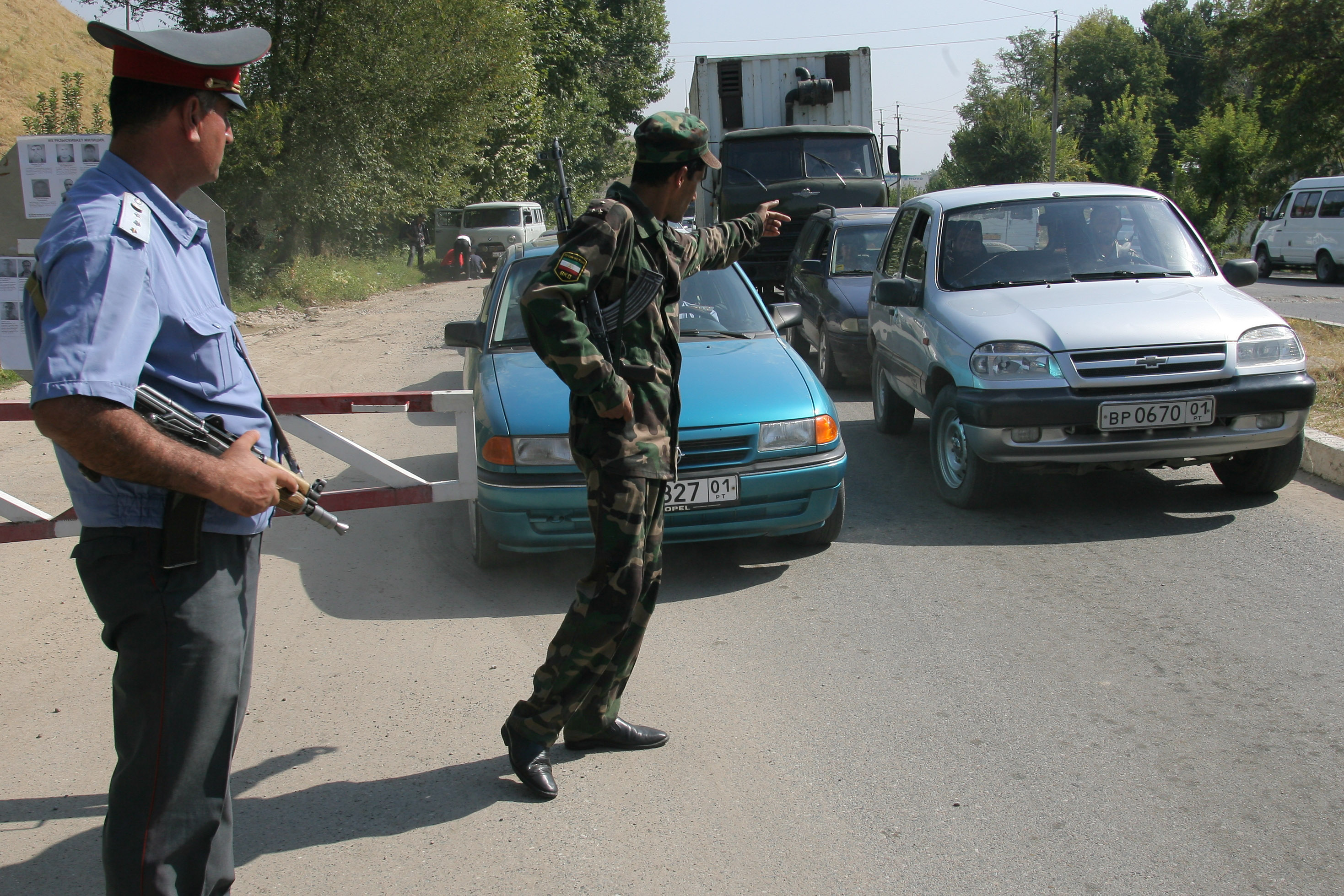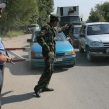
Tajikistan Cracks Down on Islamic Movement of Uzbekistan
Publication: Eurasia Daily Monitor Volume: 9 Issue: 87
By:

On April 19, a Tajikistan court convicted 34 alleged members of the Islamic Movement of Uzbekistan of a variety of crimes including, murder, establishing an unlawful armed group, provoking sectarian conflict and attempting to overthrow the government (BBC Tajiki, April 19). Prosecutors claimed that members of the group were complicit in attacks against a detention center in the city of Kairakkum and a border post in Isfara, the murder of several police officers, and helped facilitate a suicide attack against security forces in Khujand in 2010 (BBC Tajiki, April 19). The convicted, who are between the ages of 18 to 55, were given sentences ranging from 8 to 28 years in prison. All members of the group including its leader, Adbulkholiq Boboev, are residents of the district of Isfara in northern Tajikistan (Ozodagon, April 19; BBC Tajiki, January 31).
In a separate case, on March 12, five residents of Isfara district who are also believed to be linked with the IMU were convicted of an attack in the village of Chorkuh, which led to the death of a soldier (BBC Tajiki, March 12; Ozodagon, December 11, 2011).
However, Tajikistan’s recent crackdown on the IMU has not been limited to Isfara. Over the past couple of months, several cases in the district of Qubodiyon in southern Khatlon province have attracted attention, including the arrest of an IMU member attempting to recruit fighters to send to Pakistan. Additionally two suspected members of the IMU, also from Qubodiyon, were convicted of “propagating extremism” (Ruzgor, April 8). In February, a Tajik national, Bakhtiyor Umarov, was arrested in Pakistan under suspicion of terrorist activities and extradited to Tajikistan (Pakistan Observer, February 15). Security officials are currently searching for 10 additional members linked to Umarov. Officials report that these incidents involved young men among the students who last year were forcibly repatriated from madrassas in Pakistan (Ruzgor, April 8). According to an IMU propaganda website, last year at least ten Tajik citizens were killed in Afghanistan and Pakistan while fighting with the IMU (Ozodi, September 12, 2011).
Over the past couple of years, Tajikistan has seen periodic flare-ups in violence, notably in 2010 in the restive Rasht Valley when opposition forces ambushed a Tajik military convoy killing 28. The subsequent government reprisals in the valley resulted in the death of several prominent opposition figures including Abdullo Rahimov aka “Mullo Abdullo” and Alovuddin Davlatov aka “Ali Bedaki” (for background on violence in the Rasht Valley see EDM, September 29, 2010 and Terrorism Monitor, October 4, 2010). However, while the violence in Rasht has garnered most of the headlines, other areas of Tajikistan have attracted less attention. According to Tajikistan’s deputy prosecutor general, Abdukodir Muhamadiyev, in 2011 over 200 members of extremist organizations were detained nationwide and among the 168 convicted were 53 members of the IMU (RIA Novosti, January 10). As of November 2011, 46 suspected IMU members were detained in Sugd province alone along with another 13 members of professedly non-violent but banned Islamic groups, Hizb-ut-Tahrir and Tablighi Jamaat (Pressa.tj, November 9, 2011). Likewise, in 2010, 48 alleged members of the IMU were arrested in Sugd province in the cities of Isfara, Istaravshan and Khujand (BBC Tajiki, July 14, 2011). Most notably, the northern district of Isfara in the northern Tajikistan situated directly at the conjunction of Fergana province of Uzbekistan and Batken, Kyrgyzstan is recognized as a center for IMU activity. Specifically, the small village of Chorkuh has seen a disproportionate degree of violence and arrests of IMU members. In addition to being a pocket of Islamic fundamentalism Chorkuh’s proximity to the Kyrgyz border has also turned it into an ethnic flashpoint. Last spring, Kyrgyz special forces uprooted an entire orchard of 400 apricot trees in Chorkuh, an act that intensified the tensions on a border, which periodically witnesses bouts of ethnic violence (Ozodi, March 23, 2011).
The IMU has not been the only target of the security forces crackdown. On May 3, Tajikistan’s Supreme Court formally banned a group by the name of “Jamaat Ansarullah” making it the 13th such banned group in the country (Ozodi, May 3). The group first gained prominence in 2010 after assuming responsibility for suicide bombing in Khujand that killed two police officers and injured scores more. Last September, the group released a video inviting Tajiks to wage jihad against the government adding, “Those who pray Namoz, observe the fast and go on the hajj, but also strive for democracy are infidels” (www.sunni-news.net, September 16, 2011). Prominent Tajik clerics such as Hoji Akbar Turajonzoda condemned the video’s message as being “un-Islamic” while other opposition politicians went so far as to deny the existence of the group altogether. Member of Parliament and chief deputy of the Islamic Renaissance Party (a legal, moderate Islamic party in Tajikistan) Saidumar Hussaini said, “In our country an organization by the name of ‘Jamaat Ansarullah’ does not exist. Even among those groups that have been banned, it does not exist, and I doubt that such an organization exists anywhere in the world” (www.sunni-news.net, September 16, 2011).
Hussaini’s comments reflect a widely held belief that the Tajik government exaggerates the threat of Islamic extremism as a pretext for authoritarian rule and as a tool to delegitimize the Islamic Renaissance Party and other opposition groups. Other local analysts accept the existence of Jamaat Ansarullah, but think that the threat posed by it and other groups like the IMU is minimal (Ozodagon, September 23, 2011). Critics of the Tajik government point out that the draconian methods employed to combat terrorism and the spread of Islamic extremism are having the opposite effect of spurring its growth. The government’s crackdown on Islamists lacks subtlety in several regards. First, it paints all Islamists groups with a broad brush, conflating (allegedly) purely missionary organizations such as Hizb-ut-Tahrir with militant organizations like the IMU. Secondly, it tends to view all violent opposition through the lens of Islamic militancy when in fact some local and foreign experts believe violence in the Kamarob gorge and Rasht valley is better understood to be a legacy of Tajikistan’s civil war with political causes rooted in regionalism.
At the same time, it is worth noting that IMU activity and Islamic militancy in Khatlon and Sugd provinces cannot be similarly deconstructed. Militancy in Isfara is less a product of Tajikistan’s civil war and more attributable to the influence the IMU’s founder Jumma Kasimov aka “Juma Namangani” who hailed from the Ferghana Valley in Uzbekistan. While there is no doubt that the militancy in the Ferghana Valley, other parts of Tajikistan, northern Afghanistan (Kunduz province in particular) and the tribal areas of Pakistan is linked to some degree, care must be taken to not subsume all instances of violence or Islamic extremism into one, all-encompassing narrative. Radical Islamic thought, as well as local political grievances and the criminal base generated by the enormous profits derived from drug trafficking along this route, all contribute to what often flies under the banner of Islamic militancy in Tajikistan.




